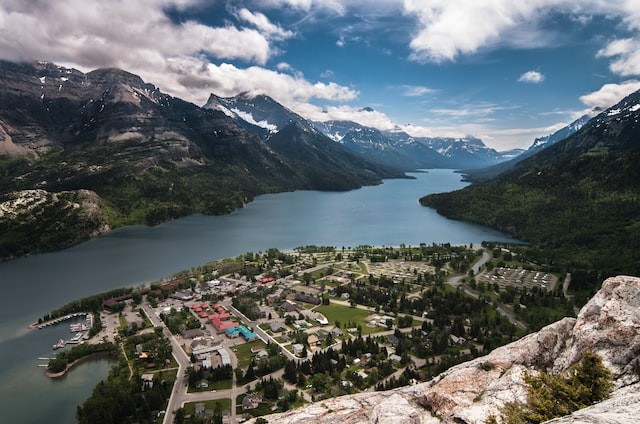Changing streamflow can imperil the ecosystems that rely on it, but researchers have been unable to collect data on how human infrastructure has affected streamflow in the United States.
New research has tracked streamflow changes across the continental United States, giving a plethora of information for calculating social consequences on ecosystems.
Researchers map streamflow alterations to gauge human impact on ecosystems
 (Photo : Brenton Walker/Unsplash)
(Photo : Brenton Walker/Unsplash)

Human constructions have altered up to 80% of the rivers and streams in the contiguous United States.
Understanding the link between these changes and ecological responses is critical for implementing management plans that balance human and ecological water requirements, as per ScienceDaily.
Researchers built a forecast model of hydrologic change and its implications for native fish species using data from over 7,000 stream gauges.
They used it for over 2.6 million streams, resulting in a massive dataset.
According to co-author Ryan Morrison, an associate professor of Civil and Environmental Engineering at CSU, this study gave data on changes in flow not only on the major rivers but on practically every important stream section that we know exists.
According to the researchers, the information might fill gaps in regional data needed to define environmental flow criteria and serve as a tool for prioritizing streamflow preservation or restoration.
Environmental fluxes are required to sustain river ecosystems, but measuring them is challenging due to a lack of data, according to Ryan McManamay, lead author and assistant professor of environmental science at Baylor University.
The study fills major information gaps and contributes some much-needed knowledge to river protection.
Although freshwater ecosystems account for less than 0.5% of Earth's surface water, they are home to 7% of the world's species and one-third of all vertebrates, according to a study published in Nature Scientific Data.
Rivers and streams are deemed quantitatively scarce even among freshwater ecosystems, yet offer disproportionate services to humans, leading to over-exploitation, McManamay stated.
The researchers looked at U.S. Data from the Geological Survey's stream gauges and the human effects on those streams
They then employed machine learning and GIS data on human changes in basins without gauges to forecast flow impacts in those basins.
They anticipated fish biodiversity loss in human-modified streams based on past studies examining fish responses to changes in flow.
They discovered that while the hydrologic modification models performed well during validation, the modeled ecological reactions were less accurate due to a lack of data and the complexity of components.
Also Read: Low Elevation Watersheds will be Affected by Global Warming, Researchers Say
The Advantages of Healthy Watersheds
Why is it important to identify and preserve healthy watersheds?
Healthy watersheds have a significant impact on the overall quality of life for people and the environment, often by doing "free labor" that communities do not have to undertake or pay for, as per EPA.
Watersheds' positive functions in healthy conditions can be surprisingly broad, including environmental services, economic advantages, and physical and mental health benefits.
Many ecosystem services are provided by healthy watersheds, including but not limited to: nutrient cycling, carbon storage, erosion/sedimentation control, increased biodiversity, soil formation, wildlife movement corridors, water storage, water filtration, flood control, food, timber, and recreation, as well as reduced vulnerability to invasive species, the effects of climate change, and other natural disasters.
These products and services are critical to our social, ecological, and economic well-being.
Protecting healthy watersheds may lower construction expenditures for water treatment facilities and limit flood damage to property and infrastructure, avoiding future costs.
Furthermore, conserving healthy watersheds may create cash through increased property values, leisure, and tourism.
Reduced expenses for drinking water treatment and infrastructure. Pollutants are filtered and water quality is protected by natural settings.
An assessment of treatment costs and watershed features for 27 drinking water utilities discovered that every 10% increase in forest cover of the source water region reduces chemical and treatment costs by 20%.
In a second situation, New York City discovered that protecting the watershed's natural land cover and woods to offer natural filtration was far more cost-effective than building a multibillion-dollar water treatment plant.
Floodplains and natural landscapes lessen flood area and impact, relieve pressure on public drainage infrastructure, and improve groundwater recharge.
Fishing, boating, swimming, hiking, biking, animal watching, and ecotourism are all possible in healthy watersheds.
Over 30 million people fish recreationally in the United States, and these anglers produce nearly 1 million employees and over $45 billion in retail purchases each year.
Overall, the outdoor recreation industry generates $79.6 billion in federal and state tax receipts and contributes $646 billion to the economy each year.
Property values in or near healthy watersheds are greater than in or near degraded ecosystems and impaired streams.
Related article: 1 in 10 Watersheds in the Continental US Stressed with Number Likely to Grow
© 2024 NatureWorldNews.com All rights reserved. Do not reproduce without permission.

![Tsunami Hazard Zones: New US Map Shows Places at Risk of Flooding and Tsunamis Amid Rising Sea Levels [NOAA]](https://1471793142.rsc.cdn77.org/data/thumbs/full/70325/280/157/50/40/tsunami-hazard-zones-new-us-map-shows-places-at-risk-of-flooding-and-tsunamis-amid-rising-sea-levels-noaa.jpg)



